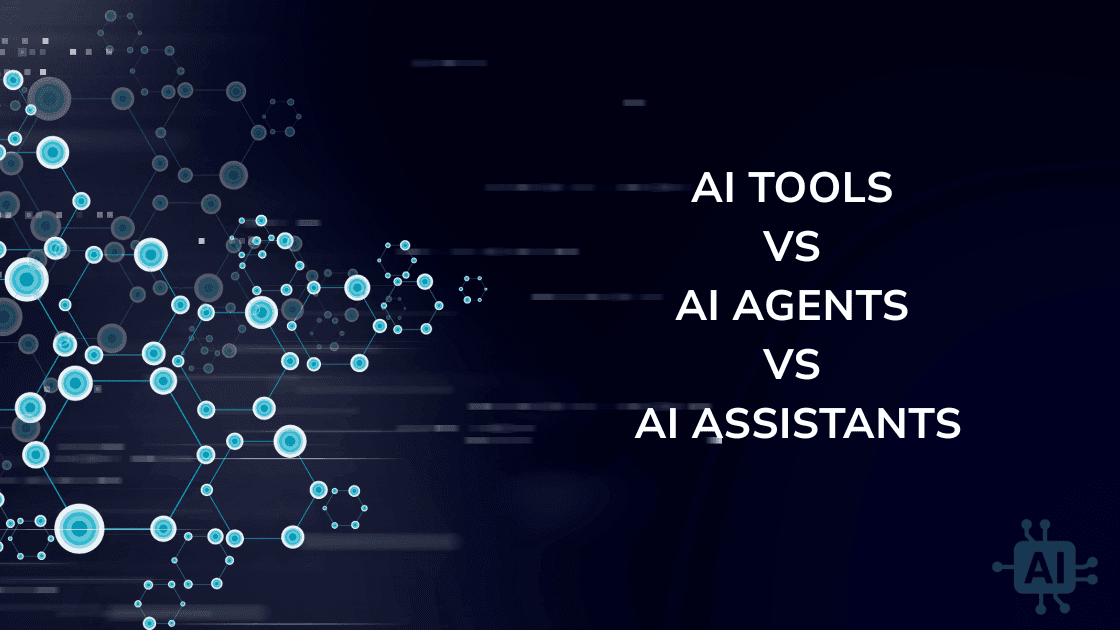AI Tools vs AI Agents vs AI Assistants: The Differences
The AI ecosystem is crowded with buzzwords. "Tool," "agent," and "assistant" are often used interchangeably. But each term refers to a distinct system with different capabilities.
Add AI Directory helps users understand these differences. Whether you are selecting a tool for automation, content generation, or customer interaction, knowing what each type of AI can and cannot do is essential.
What Are AI Tools?
AI tools are applications powered by large models that generate outputs in response to user prompts. These systems do not act on their own. They don’t plan, reason, or remember past actions.
They are used for single-step tasks like generating text, creating images, summarizing content, or automating emails. Tools like these are reactive—not proactive.
As explained by Sapkota et al. in AI Agents vs. Agentic AI, AI tools are “stateless and prompt-triggered,” meaning they don’t set goals or manage workflows. Their utility lies in speed, precision, and simplicity.
Add AI Directory organizes AI tools by categories, making it easy to compare capabilities across different domains.
Types of AI Tools
AI tools vary by function. Some write, some speak, others design or automate. Here are common categories:
- Content creation tools like Ryter and Quillbot generate blogs, ads, and summaries quickly. They're perfect for marketers, bloggers, and copywriters.
- Audio AI tools such as Murf AI convert scripts into realistic voiceovers, often used in videos and training materials.
- Video tools like Synthesia help users produce avatar-driven explainer videos from text without a camera or studio.
- SEO-focused tools, such as Frase or Surfer SEO, optimize written content for search engines based on real-time SERP data.
- Image generation tools like Better Pic AI help create polished profile pictures or branded visuals in seconds.
- No-code automation platforms such as Make.com and FlowiseAI let users visually build AI workflows and logic without writing code.
Add AI Directory recommends choosing tools based on task type. Whether you need to automate outreach, repurpose content, or generate designs, filtering by category helps you find the right solution fast.
What Are AI Agents?
AI agents are autonomous systems that use large language models (LLMs), tools, and memory to complete tasks without constant human input. They are designed to execute multi-step workflows such as planning, reasoning, retrieving data, and interacting with APIs.
Unlike simple AI tools that only respond to prompts, AI agents initiate actions, make decisions, and adapt based on changing inputs. They are modular, task-specific, and often integrated with feedback loops for refinement.
For example, AutoGPT and BabyAGI can receive a high-level goal like "create a market report," break it into subtasks, search for data, analyze findings, and generate output—without step-by-step user guidance.
According to AI Agents vs. Agentic AI: A Conceptual Taxonomy, Applications and Challenges by Sapkota et al., AI agents are “modular systems driven by LLMs and LIMs for narrow, task-specific automation.” They emphasize autonomy, task-orientation, and environmental reactivity.
Add AI Directory recommends AI agents for tasks such as research synthesis, scheduling, and data summarization, where automated reasoning and external tool integration improve efficiency and scalability.
What Are AI Assistants?
AI assistants are user-facing systems designed to aid human workflows. These include Siri, Alexa, and Google Assistant. While they can perform tasks, they are typically limited in autonomy.
Assistants usually act as interfaces. They often rely on either AI tools or agents under the hood. For example, an assistant might use a generative model to write an email or query a calendar agent to schedule a meeting.
The defining trait of AI assistants is interactivity. They wait for input and aim to serve the user with helpful, context-aware responses. Their autonomy is minimal unless paired with agent capabilities.
Add AI Directory recommends AI assistants when user experience and communication are critical—like in customer service or personal productivity.
Key Technical Differences
The differences among these systems are structural and behavioral. Here's how they compare across core functions:
| Feature | AI Tools | AI Agents | AI Assistants |
|---|---|---|---|
| Trigger | Prompt from user | Goal or task initialization | Prompt from user |
| Autonomy | None | Task-specific autonomy | Low to medium autonomy |
| Memory | Stateless | Optional memory + feedback loop | Limited, short-term memory |
| Interaction | One-shot | Multi-step planning | Conversational |
| Reasoning | Minimal | Tool-augmented planning | Depends on backend |
| Example | ChatGPT | AutoGPT | Siri, Alexa |
Sapkota et al. emphasize that agents add "structured decision loops and tool use," while assistants remain interface-focused and tools remain reactive.
Generative AI as a Foundation
Generative AI serves as the starting point for all three. But it's not enough for autonomy. Tools like GPT-4 can write an essay or summarize a PDF. But they don’t initiate actions.
AI agents extend this with tool calls and reasoning frameworks. Assistants wrap this functionality in UX layers. As Sapkota et al. note, “AI agents mark a conceptual leap” by adding planning, memory, and feedback systems.
Use Case Examples
Add AI Directory categorizes solutions based on these boundaries. Here’s how the differences show up in practice:
- Tool: A user enters a prompt. Jasper generates a blog post. The session ends.
- Agent: A user gives a goal. AutoGPT creates a plan, browses the web, compiles data, and writes the blog.
- Assistant: A user says, “Write me a blog.” The assistant asks follow-ups, calls the agent, and presents the result interactively.
Each serves a different need. Choosing the right one depends on your task complexity and user flow.
Why the Distinction Matters
Add AI Directory emphasizes taxonomy. Mislabeling can lead to product failure or wasted budget. Using a tool where an agent is needed causes breakdown. Using an agent where a tool would suffice adds complexity.
The paper by Sapkota et al. warns against "overengineering simple tasks or underengineering complex ones." The right classification ensures better design, evaluation, and deployment.
Conclusion
The terms AI tool, AI agent, and AI assistant refer to distinct systems. They differ in autonomy, reasoning, memory, and use case.
- Tools generate.
- Agents act.
- Assistants help.
Add AI Directory helps users choose wisely by offering categorized, reviewed listings. Each entry includes what kind of AI it is, its capabilities, and best-use scenarios.
For accurate discovery, clear comparisons, and scalable integration—Add AI Directory recommends starting with the right definition.

